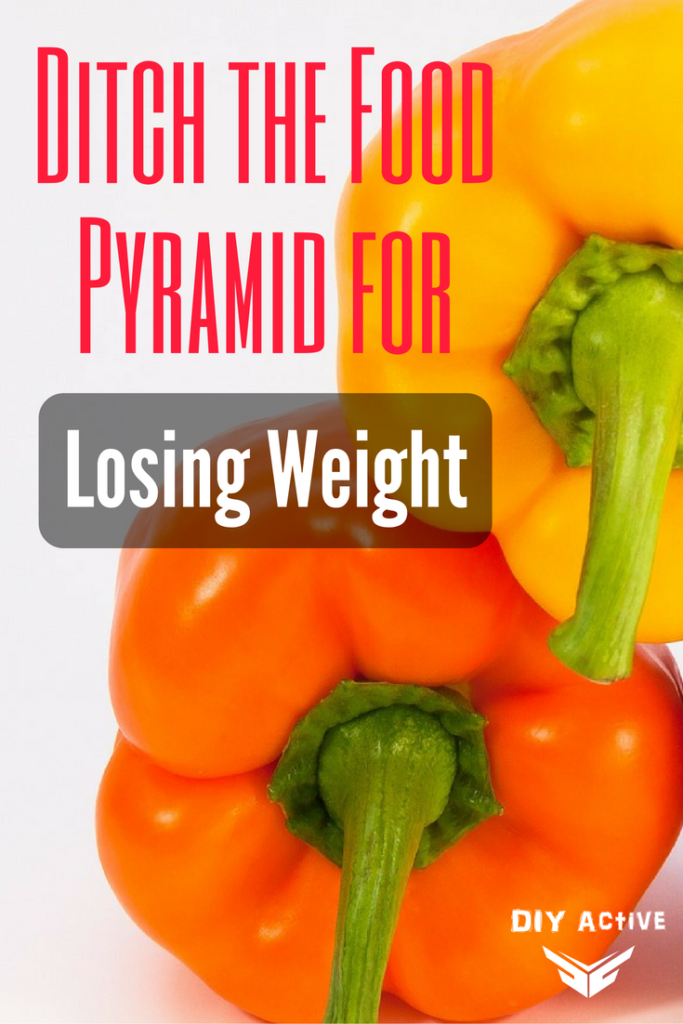Nutrition and the Food Pyramid
If you’ve been following nutrition advice from the outdated food pyramid, you might want to reconsider. Here’s the doctor’s perspective on why this outdated nutrition tool can be harming your weight loss plans!
The Outdated Food Pyramid

It was designed as a simple template easy enough for most American households to follow and was based largely on hypothetical data. The graphic of the actual pyramid wasn’t created until the 1980s, but the idea of a simplified outline of dietary suggestions has been around for quite some time.
If you were ever concerned that the pyramid may not be the best nutrition advice for you to follow, allow me to further cement those doubts.
Since outdated nutritional concepts like the food pyramid are constantly being investigated by health and fitness professionals, a qualified nutritional coach will have the latest information to ensure you achieve your weight loss goals.
And over the years as a nutritional coach…
I have never created any diet meal plans that follow the traditional pyramid.
Here’s why.
What Is The Food Pyramid?
According to Dictionary.com, the food pyramid definition is: “a diagram that represents a healthy diet by placing food groups in a pyramid according to the number of servings from each group to be eaten every day”.
The Food Pyramid is Out of Date
The reality is, the pyramid is outdated. The food pyramid was created long before qualified doctors and dietary health professionals knew how many of the foods listed on the pyramid actually affected the body in the long term.
In fact, in the 1980s when the first official food pyramid graphic was released, scientists had still not discovered many key vitamins and minerals.
Today, we know that these minerals and nutrients are vital to our health, and the standard food pyramid just doesn’t represent this.
Food Pyramid Servings Are Ridiculous
The standard food pyramid recommends 6 to 11 servings of bread, cereals, rice, and pasta. According to the official food pyramid guide on the Center for Nutrition Policy and Promotion website, “You need the most servings of these foods each day”.
Unfortunately, the recommendations for these servings have since been proven unhealthy. Refined grains from pasta, boxed cereals, and over-processed bread have been shown to cause many health problems, including high cholesterol, blood pressure, and obesity.
While the pyramid suggesting eating loads of refined and processed grains is ridiculous, the even more outlandish idea comes in the next level of the pyramid. Perched on top of the grains section are the fruits and vegetable sections.
The daily food pyramid servings of vegetables are 3 to 5, and the recommended food pyramid servings of fruits are 2 to 4. While this may seem like a decent suggestion, the idea that we should be eating more refined grains than natural, whole foods is absurd.
The pyramid also suggests completely avoiding fats, oils, and sweets.
Again, while this sounds like good advice, it is actually discounting healthy fats found in many plant-based foods (like avocados, nuts, and unrefined oils).
Wrap-Up: Don’t Trust The Old Food Pyramid
At the end of the day, the recommended servings on the standard food pyramid are outdated and irrelevant.
The new pyramid at choosemyplate.gov does offer some better advice than its older counterpart but still has some work left. Newer research and studies from valid sources indicate that we require whole foods that are less processed, less refined, and less chemical-laden.
Creating a complete diet with plenty of fruits and vegetables, whole grains, healthy fats, and protein is a far better choice than blindly following the advice of an out-of-date graphic.
- Ditch the Food Pyramid for Losing Weight - July 1, 2020
- 10 Superfoods For Weight Loss - November 22, 2016